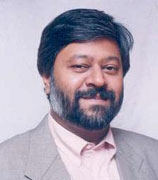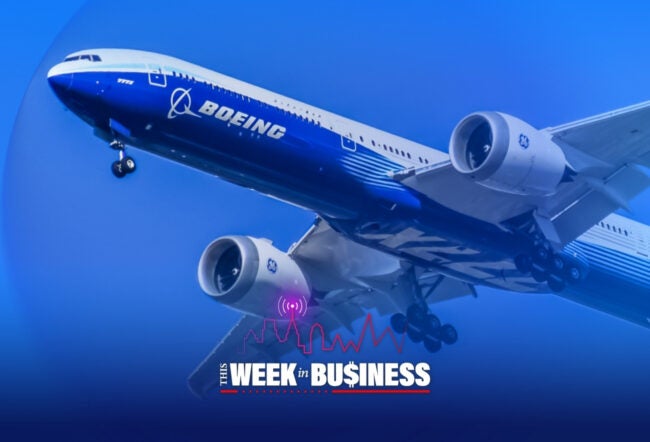Mastek describes itself as an “offshore outsourcing company.” A mid-tier information technology company headquartered in Mumbai, Mastek has had to confront the global economic crisis and the fall in technology spending. In 2007-08, after many years of double-digit growth, Mastek’s rupee revenues grew only 5%. This was due to a 16% drop in North American revenues.
But unlike other IT companies caught in the downturn, the $227 million Mastek — ranked 56 on the Dataquest Top 200 list — has been better prepared. First, it has a large chunk of its revenues coming from Europe. Second, it has worked on a partnership model, particularly with government agencies. One of its key projects today is the London Congestion Charging — a program to deter drivers from making unnecessary car trips through central London, thereby reducing congestion — in partnership with the Capita Group. Spending on such projects normally weathers private sector downturns. The other major vertical for Mastek is insurance.
Mastek may have also been better prepared because its leaders — particularly CEO Sudhakar Ram — have been evangelists for the Indian IT industry. They saw change coming and were ready to embrace it. In this interview with India Knowledge at Wharton, Ram talks about what the future holds for the industry and his company.
India Knowledge at Wharton: The Indian IT industry has hit a rough patch because of problems in the West. How do you see the future playing out in the short term and the medium term?
Sudhakar Ram: It is in the nature of business to go through cycles. The IT industry is not immune to these cycles and has had to face the overall downturn. However, the fundamental attractiveness of India as the preferred IT destination remains as compelling as ever. While the companies that have built a great business on the basis of labor arbitrage and costs will continue to remain relevant and grow, the future throws up even greater opportunities for the innovative Indian players who can create a strategic advantage for their clients. I call this the third wave of Indian IT.
India Knowledge at Wharton: What were the first two waves about?
Ram: Any industry in a developing country goes through three stages — as a supplier of raw material, as an OEM supplier and as a brand in its own right. If you take the example of the electronic industry in Southeast Asia, you can see a similar progression and maturity.
In the case of IT, the raw material is talent and the OEM equivalent is creating and maintaining a software program based on specs given by the customer. Wave 1, therefore, was when Indian companies adopted the body shopping/staff augmentation route to establishing that Indian programmers were competent and could deliver.
Wave 2 was fueled by companies like Motorola, Nortel and GE. These firms had the vision to see the India advantage. The significant growth of the industry during Y2K established India as a programming destination where parts of an entire project (work packages) could be produced cost-effectively, yet with high quality. This was because of the investments made by Indian companies on quality processes and systems. In many ways, the Indian investment in software quality is similar to the Japanese investment in manufacturing quality. These investments helped India achieve mainstream status as an outsourcing destination.
India Knowledge at Wharton: What is the Third Wave?
Ram: The Third Wave is about going beyond labor arbitrage and a linear model to leverage Indian expertise to higher value solutions. Through a combination of domain expertise, intellectual property (IP) and C-level relationships, there is a great opportunity for Indian companies to play a strategic role in their clients’ growth.
India Knowledge at Wharton: How are Indian companies preparing for this?
Ram: Most Indian companies have recognized this opportunity and are making investments in different forms and sizes. Some are focusing on consulting, some on IP and a few on complete new business models using SAAS (software as a service), Platform Based-BPO and the like. Over the next few years, the markets will choose the winners.
India Knowledge at Wharton: How has (and had) Mastek positioned itself to take advantage of these waves?
Ram: Mastek was in a unique position since we have always been in the strategic solutions space. In many ways, we were a Wave 3 company since 1982, waiting for Wave 3 to happen. We have chosen high-end vertical enterprise solutions as our area. We currently operate in the public sector and government verticals with plans for entering financial services and healthcare at the appropriate juncture.
India Knowledge at Wharton: How is Mastek coping with the current crisis?
Ram: We are protected to a large extent because of our involvement with long-term transformational programs both in the public sector and insurance, which are difficult to scale back. However, we do expect some cutbacks in ongoing client relationships and delays in new orders.
India Knowledge at Wharton: What are the geographies and the business verticals that the industry should be addressing now?
Ram: For India, the most accessible markets remain the English-speaking countries — accounting for more than 75% of our revenues as a country. Except for classified, high-security defense work, I see every vertical as a potential opportunity for Indian companies willing to make the investment in domain expertise and IP creation — some larger than others. It is up to firms to decide on their target markets.
India Knowledge at Wharton: There is a feeling that Indian IT companies surrendered the domestic market to the multinationals, who could afford to undercut rates because they saw it as a seeding operation. Is this true? How can Indian companies recapture these markets, which are growing in importance, particularly now?
Ram: The multinationals do have a significant share of the Indian market, especially in large SI (systems integration) deals. I see this less due to rates and more due to two other factors — the average Indian buyer still placing a premium on ‘Western’ technology; and the focus of most large Indian players on exports rather than the less lucrative domestic segment. This situation has now changed, partly because of the slowdown. In the next few years, we will see a lot of action from Indian players in the domestic market and a corresponding increase in our share of the domestic market.
India Knowledge at Wharton: Mastek has always believed in partnerships, particularly in large government projects. How have you been able to leverage this?
Ram: For us, partnerships have been strategic and constitute around 50% of our revenues. We bring strong architecture, design and delivery capabilities to build greenfield platforms and applications that enable clients undertaking major transformational programs like reducing traffic congestion, improving delivery of healthcare, improving mortality ratios for insurance companies and so on. Our SI/BPO partners have been able to leverage this capability in delivering large and complex programs. We also share the risks of the program by taking on the applications on a fixed price mode. We, therefore, become an attractive consortium partner to work with.
India Knowledge at Wharton: The London Congestion Charging is one of the most interesting of your recent projects. Can you tell us a little more about this?
Ram: The London Congestion Charging program went live in 2003 and has been in operation for more than five years now. Capita was the prime [mover] in this program and ran the service for the city of London while we built the application and continue to maintain it on behalf of Capita. The program was successful in reducing congestion in London by around 20%.
India Knowledge at Wharton: Over the past two years you have acquired some firms in the U.S. and also set up a war chest for more takeovers. What is the strategy here?
Ram: Given our strategy of being a high-end enterprise solution provider, it is critical to build both the domain expertise in specific industries and applications as well as build IP in the form of enterprise platforms that provide the base functionality required by that industry. While some of these capabilities are grown organically, we have used acquisitions to supplement and accelerate this process as well as acquire a customer base in select industry verticals. Our acquisitions so far have been centered around insurance — life and annuity as well as property and casualty.
India Knowledge at Wharton: You have moved out of business process outsourcing (BPO) activities. Are the margins too low? Does it need a different corporate culture that does not suit Mastek?
Ram: We realized that the BPO business has a very different set of core competencies and capabilities than the solutions business and there is little synergy in combining the two. We find it more appropriate to partner with BPO companies like Capita.
India Knowledge at Wharton: You moved to the U.S. to oversee Mastek’s operations in that market. What have you learned?
Ram: I have been in the U.S. for more than three years with a view to understanding the market better. Watching the market from close quarters convinced me that we were on the right path in building a solutions business rather than a pure services business. It gave me the confidence that our solutions and capabilities were technologically ahead of the local competition. In combination with our solution delivery and program management competencies, it convinced me that we had a huge opportunity to gain market leadership in our chosen verticals within the U.S.
India Knowledge at Wharton: Is doing business in the U.S. different now in the wake of the global meltdown? How must Indian IT companies change?
Ram: The fundamentals of business remain the same. However, at a basic level, the meltdown is a result of failure in the core underwriting and risk management systems in large financial institutions. It is a result of the information and control systems failing to keep pace with the ingenuity of the ‘quants’ who went ahead and created complex derivative products that were further and further removed from the real assets. Indian companies have an opportunity to go beyond labor arbitrage into collaborating with the customers and other experts in creating innovative solutions that help mammoth corporations govern and manage themselves better.
India Knowledge at Wharton: Your founder, Ashank Desai, has taken on a non-executive role. This seems to be a pattern in the IT industry — Infosys chief N.R. Narayanamurthy, and then Nandan Nilekani also stepped down from active roles. Is there something that can be read into this?
Ram: This is probably because all of them have aspirations beyond their own companies, in wanting to make a larger impact across the globe. Thankfully, this gives an opportunity for people like me.



